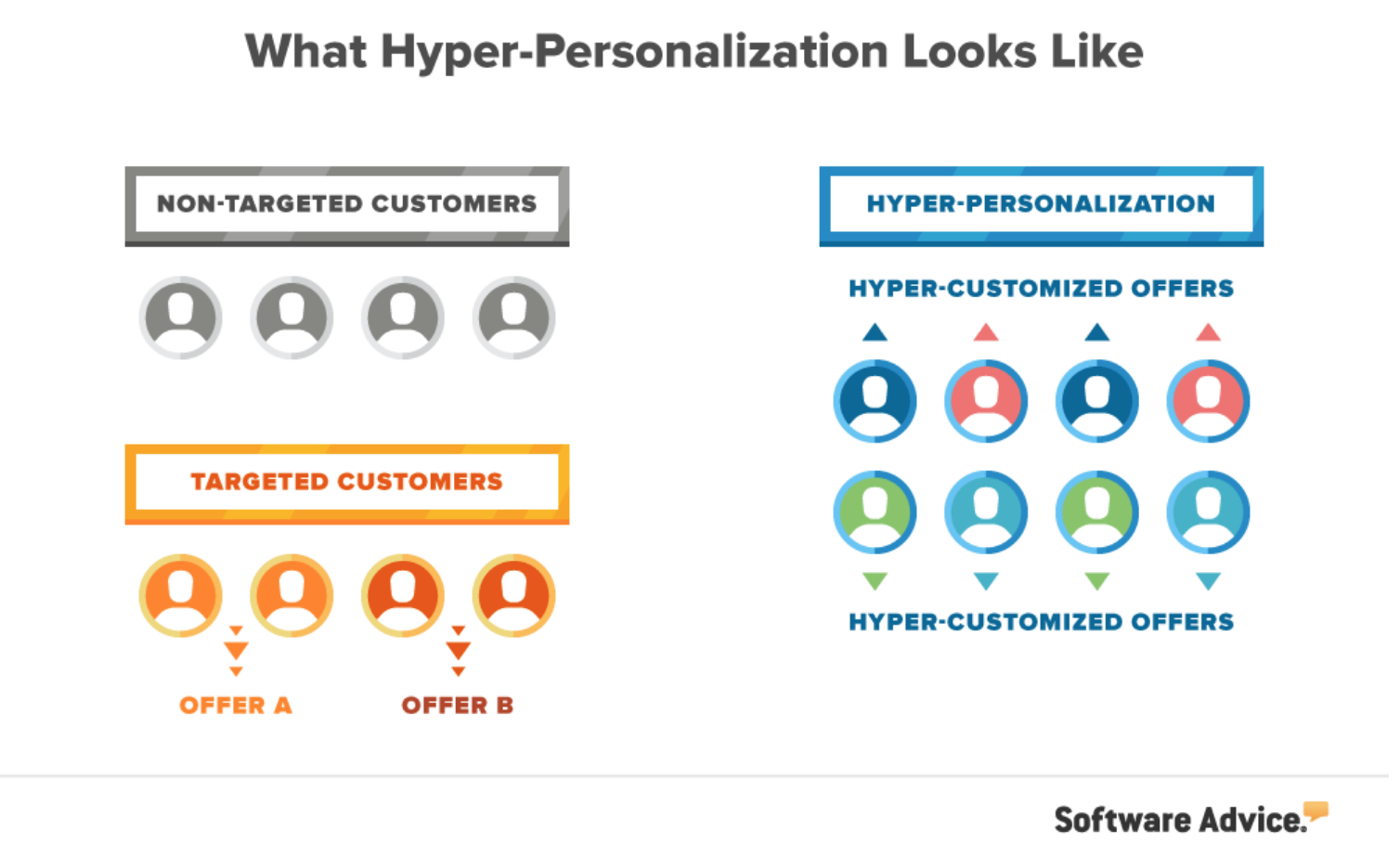How Hyper-Personalization Will Improve Your In-store and Online Experience
Think about your favorite brands. Most likely, these successful retailers have adapted to an omnichannel world and are embracing in-store and online, using both to complement each other to provide a hyper-personalized customer experience.
Here’s what we’ll cover:
What is hyper-personalization?
Why in-store and online must work together
Build customer profiles through POS in real-time
Train associates to use POS for personalization
How to start with hyper-personalization
What is hyper-personalization?
Chances are this isn’t the first time you’ve heard about personalization. Personalization, in the context of retail, is the process of using personal data to provide tailored experiences to establish a long-lasting customer relationship.
Hyper-personalization takes personalization one step further by using real-time data to provide customized relevant content tailored to every individual customer. When executed well, it fulfills—and even exceeds—the expectations of customers.

 Retailers must invest in technologies that provide them with valuable real-time data such as prior transactions and recent web browsing to create highly personal shopping experiences that increase engagement and retention rates with a new generation of shoppers.
Retailers must invest in technologies that provide them with valuable real-time data such as prior transactions and recent web browsing to create highly personal shopping experiences that increase engagement and retention rates with a new generation of shoppers.
Why in-store and online must work together
Shopping is no longer divided between in-store and online. Today, the line between in-store and online is blurred, and merged into “omnichannel” retail.
The relationship between brick-and-mortar and online shopping has to go hand-in-hand to offer a personalized experience for shoppers. For example, the in-store experience can be amplified by online and the online experience should drive traffic in-store.
Personalization across channels can increase overall consumer spending by up to 500%, according to the E-Tailing Group’s ebook on Consumer Centric Marketing.
Despite this, many retailers aren’t taking into consideration their online and in-store marketing activities alongside each other, with systems often managed through separate systems with siloed data.
As a result, most retailers miss the opportunity to create a complete view of every customer’s up-to-the-minute activity and buying preferences. Having a clear understanding of your customer is key to delivering consistently relevant experiences in-store and online.
By gathering data in real-time, retailers are able to collect information on customers at every touch point, both in-store and online. They can then use that knowledge to better personalize and market to customers at every stage of the buyer journey to engage them and build brand loyalty, and ultimately, increase sales.
What does this look like at a practical and granular level? Let’s look at some examples of how you can (hyper) personalize both in-store and online to create a great customer experience.
Build customer profiles through POS in real-time
If you have both an in-store and online store, chances are your customers are interacting with you on more than just one platform.
Having customer data in separate channels (online and in-store) results in an inconsistent picture of your customer. Just how do you use real-time customer data to make a relevant recommendation to a customer in a timely way?
Why you should: By integrating both your online and in-store customer data, you’ll be able to have a clearer idea of who your customer is, what they’re looking for, and what their individual shopping patterns and preferences are.
Example: Amy walks into your store and one of your sales associates asks if she needs help. She says she’s looking to try out a new line of jewelry. Your sales associate asks a series of questions to gauge her style and hand picks several pieces for her, resulting in a purchase.
At the point of purchase, your sales associate asks Amy for her details in order to create a customer profile via your retail POS for future purchases. “We’ll be able to send you personalized discounts as well as recommendations based on your purchases both in-store and online,” says your associate.
Amy leaves the store and shortly after, receives an email on her mobile phone about her latest purchase with a 25% discount off her next purchase (in-store or online), along with recommendations of other jewelry with similar styles. A few weeks later, Amy purchases several pieces of jewelry online.
The above scenario isn’t hard to replicate. A POS system that integrates your online and in-store experience allows you to create a unified customer profile that can be used for cross-channel personalization.
Customer data that’s based on recent purchasing behavior across channels equips you to better understand every individual’s preferences and improve recommendations, resulting in a highly personalized experience that can help drive more engagement.
Train associates to use POS for personalization
Integrating in-store and online customer behavior on your POS gives sales associates access to more information about the customer, in turn equipping them with the ability to provide a more human and personal service tailored to the individual.
Why you should: Associates will be able to access more information about the customer through their profile such as their shopping history and preferences (past purchases, preferred price point, style and products) and provide more informed recommendations when the customer is visiting in-store.
Example: Tommy bought about $80 worth of products at your online store over the weekend and is now in-store spending another $40 worth of products in-store today.
At the point of purchase, your sales associate should be notified by your POS that Tommy now qualifies to receive an additional discount if he spends another $50 within the next month.
Because your POS has the latest up-to-the-minute integrated customer data synced between your in-store and online platforms, your sales associate now has the opportunity to entice every individual customer with personalized promotions or recommendations at the point of checkout.
How to start with hyper-personalization
Customers want to be heard, understood and remembered. By using integrated customer data across channels with your POS system, you’ll be able to better deliver great customer experiences with a human touch.
Already, 51% of consumers expect that by 2020 companies will anticipate their needs and make relevant and tailored suggestions even before they make contact. Investing in the right technologies will enable you to take personalization to the next level.
Here’s what you can do to take your first step:
Talk to your vendor about technology: If you have yet to integrate customer data across your online and in-store channels, ask your vendor if that can be implemented and if so, what that will look like. Request a live demo and ask if there are other ways to implement cross channel personalization through your POS.
Don’t have a POS system? Invest in the technology: Take a look at this list of POS and follow up by calling us at (844) 687-6771 for a free consultation with one of our retail advisors. Or if you’d prefer, fill out this quick questionnaire and we’ll send you a shortlist of POS that can meet your needs and budget.